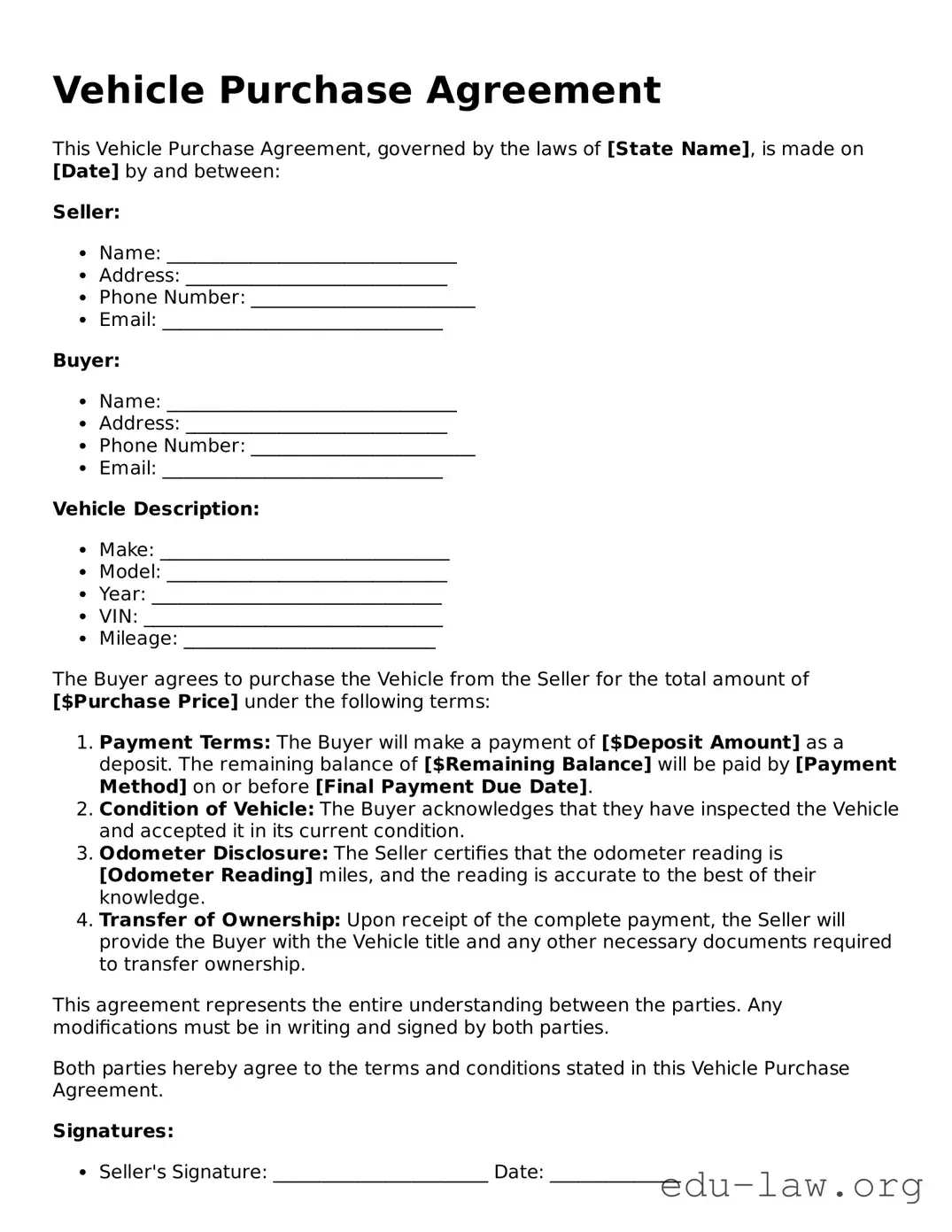The Bill of Sale serves a similar purpose to the Vehicle Purchase Agreement. It acts as a legal document that confirms the sale between the buyer and seller. In many transactions, the Bill of Sale outlines important details, such as the vehicle identification number (VIN), the sale price, and the date of sale. This document provides proof of ownership transfer and can be useful for registration purposes.
The Purchase Order is another related document. Typically used in business transactions, this document is a formal agreement from the buyer to purchase goods or services. Like a Vehicle Purchase Agreement, it specifies the terms of the sale, including the item details, quantities, pricing, and delivery instructions. Both documents ensure that buyer and seller are on the same page regarding the transaction.
The Lease Agreement can also be compared to a Vehicle Purchase Agreement, but it serves a different purpose. While the Vehicle Purchase Agreement is for outright purchase, the Lease Agreement outlines the terms for renting a vehicle over a specified period. It details payment amounts, duration, and responsibilities for maintenance, ensuring clarity on both sides regarding the use of the vehicle.
The Financing Agreement is closely linked to purchasing a vehicle through a loan. This document outlines the terms of financing, including interest rates, payment schedules, and responsibilities of both the lender and borrower. It acts as a companion to the Vehicle Purchase Agreement by providing the financial details required to complete the acquisition of a vehicle.
The Warranty Agreement is important in the context of vehicle purchases. While the Vehicle Purchase Agreement covers the sale, the Warranty Agreement protects the buyer by detailing the coverage for repairs or replacements. It specifies what issues are covered and for how long, offering peace of mind to the buyer regarding the vehicle’s condition post-purchase.
The Trade-In Agreement is relevant for buyers who wish to exchange their old vehicle for credit towards a new purchase. This document outlines the terms of the trade-in, including the vehicle being traded, the agreed value, and how that value will apply to the new Vehicle Purchase Agreement. It serves to expedite the transaction by streamlining the sale process.
The Odometer Disclosure Statement is a crucial document that accompanies vehicle sales. It confirms the actual mileage of the vehicle at the time of sale. This disclosure helps protect buyers from potential fraud and ensures compliance with federal and state laws, making it a vital part of the purchasing process.
Lastly, the Insurance Policy is important for anyone purchasing a vehicle. Though not directly a part of the Vehicle Purchase Agreement, establishing a valid insurance policy is necessary before driving the new vehicle off the lot. The policy details the coverage terms and conditions, providing protection against potential incidents. Having this document in place guarantees that legal requirements are met and the buyer is shielded from financial loss.
